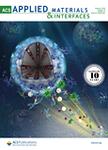版权所有:内蒙古大学图书馆 技术提供:维普资讯• 智图
内蒙古自治区呼和浩特市赛罕区大学西街235号 邮编: 010021

作者机构:Zhejiang Univ Sir Run Run Shaw Hosp Sch Med Hangzhou 310016 Zhejiang Peoples R China Zhejiang Univ Dept Gen Surg Zhejiang Key Lab Multi Precis Diag & Treatment Liv Sir Run Run Shaw HospSch Med Hangzhou 310016 Peoples R China Zhejiang Univ Inst Analyt Chem Dept Chem Hangzhou 310058 Zhejiang Peoples R China Well Healthcare Technol Co Hangzhou 310051 Peoples R China Zhejiang Univ Biomed Res Ctr Sir Run Run Shaw Hosp Sch Med Hangzhou 310016 Zhejiang Peoples R China Taizhou First Peoples Hosp Taizhou 318020 Zhejiang Peoples R China Wuyi First Peoples Hosp Jinhua 321200 Zhejiang Peoples R China Zhejiang Univ Sch Med Key Lab Canc Prevent & Intervent Canc InstChina Natl Minist EducAffiliated Hosp 2 Hangzhou 310000 Zhejiang Peoples R China Shaoxing Univ Sch Med Shaoxing 312000 Zhejiang Peoples R China Hangzhou Med Coll Sch Basic Med Sci & Forens Med Hangzhou 310000 Zhejiang Peoples R China Zhejiang Univ Childrens Hosp Sch Med Hangzhou 310052 Peoples R China
出 版 物:《ACS APPLIED MATERIALS & INTERFACES》 (ACS Appl. Mater. Interfaces)
年 卷 期:2025年第17卷第4期
页 面:5893-5908页
核心收录:
学科分类:0817[工学-化学工程与技术] 08[工学] 0805[工学-材料科学与工程(可授工学、理学学位)]
基 金:Leading Goose Project of the Science and Technology Department of Zhejiang Province [2024C03049] Major project of Health Science and Technology Program of Zhejiang Province [WKJ-ZJ-2407] National Natural Science Foundation of China [22274138, 21874118, 21575127, 82472718, 82072625] Key Project in the Agricultural and Social Development Sector of the Science and Technology Bureau of Hangzhou [20231203A09]
主 题:porous silicon laser desorption ionization serum metabolic fingerprinting liver disease diagnosis machine learning algorithm
摘 要:Hepatocellular carcinoma (HCC) is a common malignancy and generally develops from liver cirrhosis (LC), which is primarily caused by the chronic hepatitis B (CHB) virus. Reliable liquid biopsy methods for HCC screening in high-risk populations are urgently needed. Here, we establish a porous silicon-assisted laser desorption ionization mass spectrometry (PSALDI-MS) technology to profile metabolite information hidden in human serum in a high throughput manner. Serum metabolites can be captured in the pore channel of APTES-modified porous silicon (pSi) particles and well-preserved during storage or transportation. Furthermore, serum metabolites captured in the APTES-pSi particles can be directly detected on the LDI-MS without the addition of an organic matrix, thus greatly accelerating the acquisition of metabolic fingerprints of serum samples. The PSALDI-MS displays the capability of high throughput (5 min per 96 samples), high reproducibility (coefficient of variation 15%), high sensitivity (LOD similar to 1 pmol), and high tolerance to background salt and proteins. In a multicenter cohort study, 1433 subjects including healthy controls (HC), CHB, LC, and HCC volunteers were enrolled and nontargeted serum metabolomic analysis was performed on the PSALDI-MS platform. After the selection of feature metabolites, a stepwise diagnostic model for the classification of different liver disease stages was constructed by the machine learning algorithm. In external testing, the accuracy of 91.2% for HC, 71.4% for CHB, 70.0% for LC, and 95.3% for HCC was achieved by chemometrics. Preliminary studies indicated that the diagnostic model constructed from serum metabolic fingerprint also displays good predictive performance in a prospective observation. We believe that the combination of PSALDI-MS technology and machine learning may serve as an efficient tool in clinical practice.